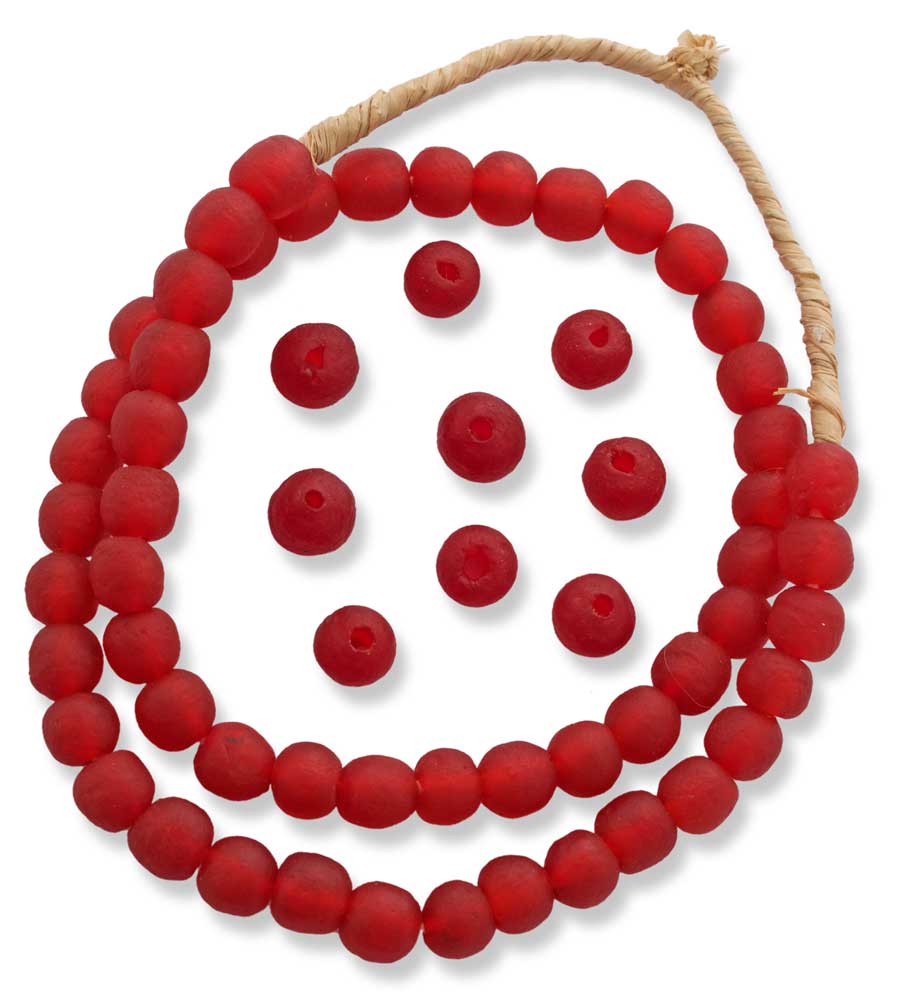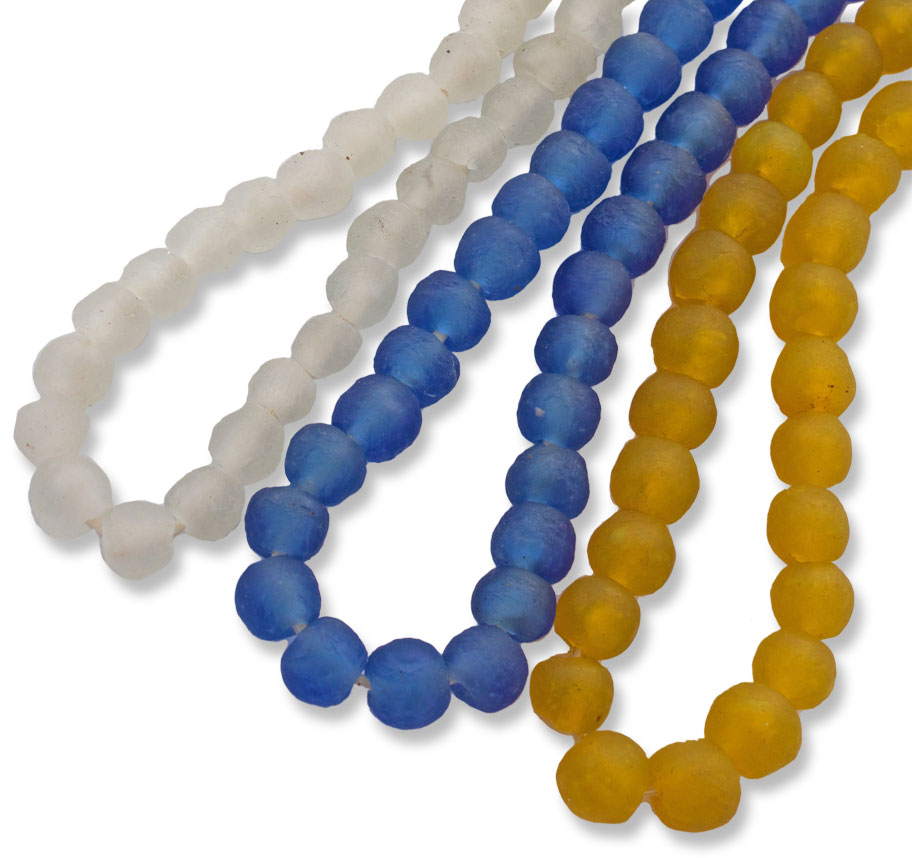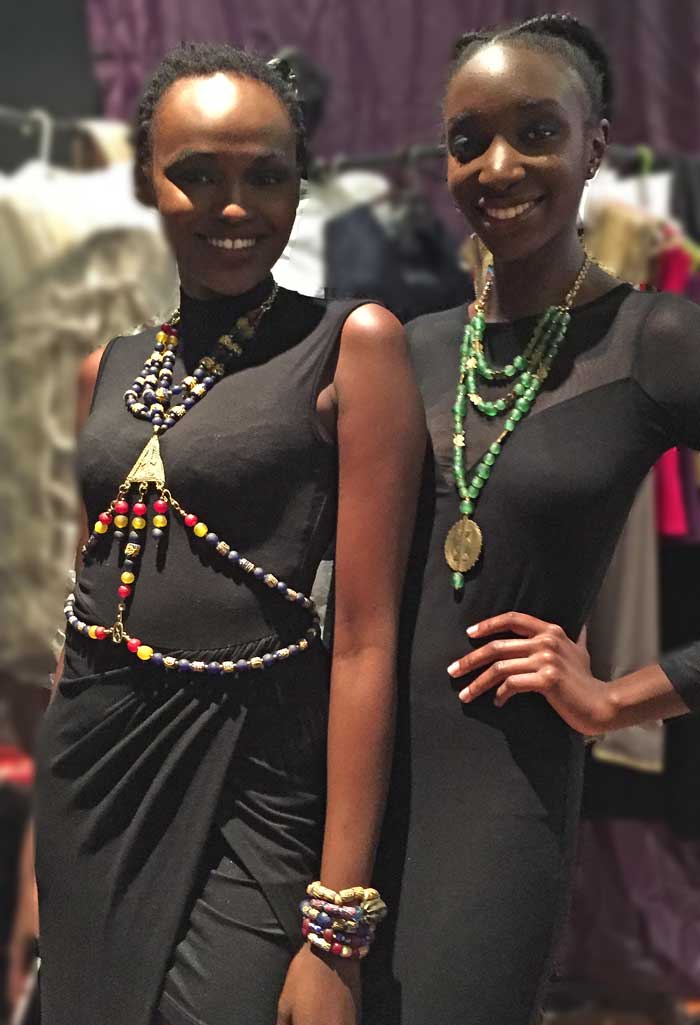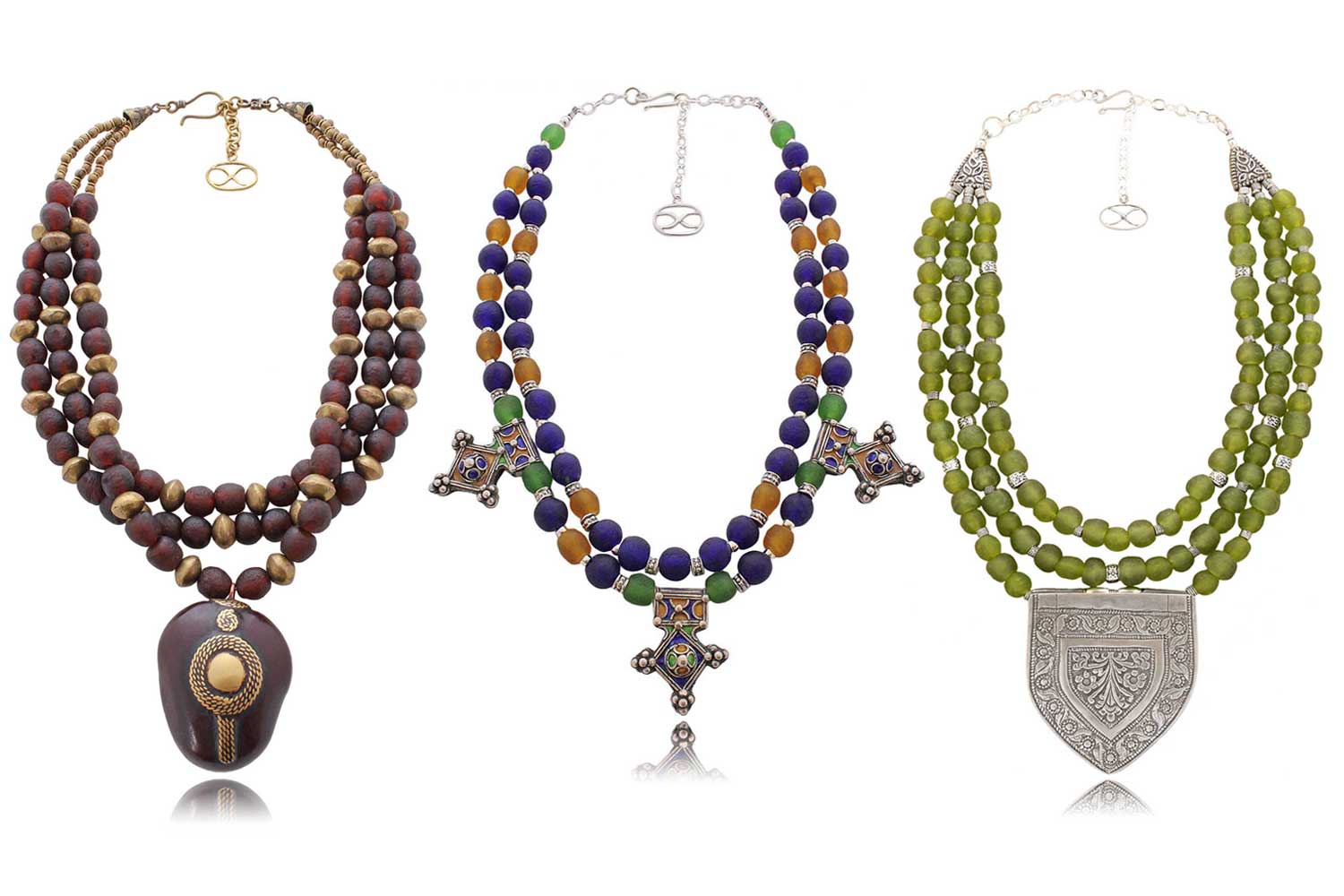“What stones are these?” she asks with curiosity as she examines the luscious green beads.
“They’re actually Ghanaian glass beads” I answer. She’s initially thrown off by my answer, but as I proceed to explain how they are made and their significance, her expression changes from bewilderment to amazement.
I get this question all the time, and as I work more and more with these beautiful beads in my recent African inspired collections for Kenya Fashion Awards and Africa Fashion Week London, I thought this would be the perfect opportunity to share a little background about them.

Where are they made?
In Ghana, by the Krobo tribe, who are one of the most significant producers of glass beads in Africa. They are used profusely in their culture, not only for adornment, but they have many other uses and symbolic meaning.
How are they made?
There are lots of glass beads available on the market, but what I particularly love about these Ghanaian beads is the fact that they are not industrially manufactured, which means that each bead is unique and retains its handmade authenticity.
The Krobo use a method that has been implemented for centuries which involves crushing recycled glass bottles with a pestle and mortar. The fragments are sieved with a wire mesh, and then poured into clay moulds that are lined with a mixture of kaolin and water to harden it and prevent the molten glass from sticking to it. The kiln in which they are fired is made from termite mound clay and is heated using firewood and crushed palm kernels, which burn at a very high temperature. The moulds are inserted and removed from the kiln using a long improvised metal spatula.
The hole for the bead is made either using a cassava stem that burns up during firing and leaves a hole, or by using a small metal tool. Once the fused glass cools, the resulting beads are washed using sand and water and rubbed against a stone to polish them. They are often rubbed with oil to give it a glossy finish.
Are there different types?
Yes, the Krobo are very creative with the variations of glass beads that they produce. The main types include:
- Translucent beads which are being made by fusing together bottle glass or glass bead fragments as described above.
- Powdered beads made from finely ground glass. Their decorative patterns are created with glass slurry that is “written” onto the bead surface using pointed sticks.
- Painted beads, whereby the finished glass beads are hand painted using a paste made up of powdered glass, ceramic dye and water. After the vibrant designs are applied, the beads are baked or fired for a second time to “fix” the decorations and then left to cool.
White colored beads evoke fertility; blue ones are associated with purity; and golden coloured symbolise wealth.

Are they durable?
One of the things I love about these glass beads is their ability to resist corrosion and therefore retain a polished surface for a very long time
What do they symbolise?
These glass beads have been used as symbols of maturity, wealth, beauty, social status, authority and identity in all the stages of the lives of the Krobo.
They are used before and after birth by mother, father and child to avert bad luck and draw good spirits.
Perhaps one of the most significant ceremonies for Krobo girls that involves the use of beads is their initiation into womanhood and adulthood when they reach puberty. This ritual is known as dipo and the use of these beads is integral to the ceremony. Large amounts of beads are worn by the initiates or on the wrist, upper arm, elbow, around the neck, calf and ankle during the ceremony. The preferred colours of the beads are red, yellow, blue and brown as they are believed to symbolise maturity and readiness for adult life, marriage and procreation.
At marriage, the bride-to-be is presented with gifts of different colours and sizes of beads by her prospective husband to wear after marriage. They symbolise the new state that she has entered and differentiate her from unmarried women.
Political and religious leaders also wear them to convey their power and status within their community. Their rank is determined by the number and type and colour of beads worn.
With so much depth to these beads, beyond their aesthetic beauty and function to adorn the body, it’s no wonder that they feature prominently in my work. I particularly love their ability to effortlessly complement both silver and gold pendants, artefacts, beads and stones that I use. It’s also a wonderful way for us to celebrate and keep the culture of Krobo glass making alive.
With such a diverse range of types, colours and meanings, what’s not to love?

Models wearing SHIKHAZURI statement pieces composed of Ghana glass beads.

